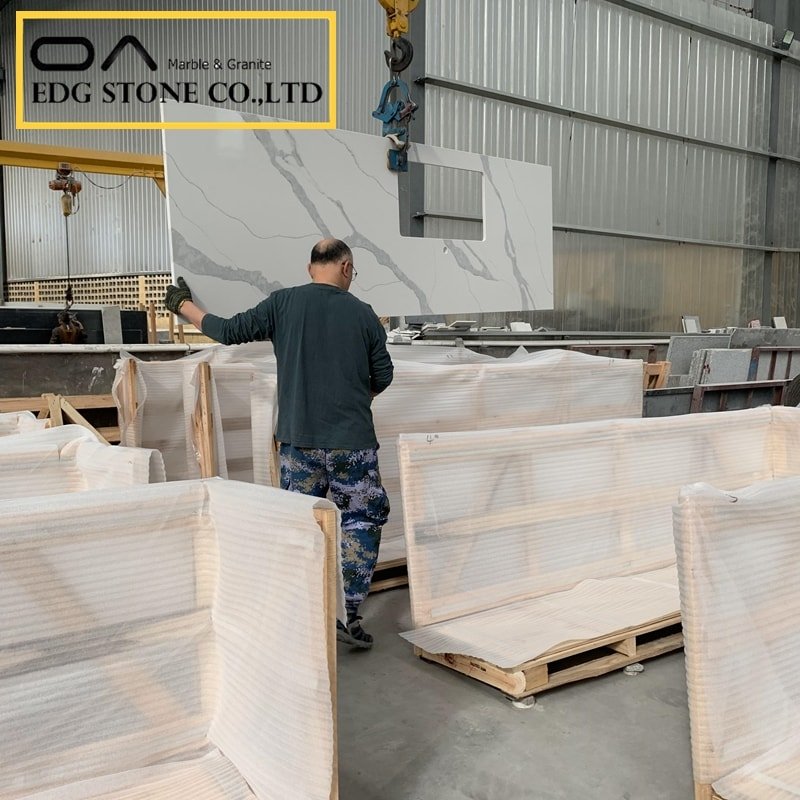The proportion of quartz stone in home decoration decorative stone is getting higher and higher, especially the use of cabinet countertops is the most common in home decoration, and the problems exposed thereafter are becoming more and more obvious, such as bursting and partial discoloration. Today, the editor will explain the reasons for the cracking and discoloration of the quartz stone countertops.
Green quartz stone countertops
Quartz stone countertops are composed of more than 90% natural quartz and about 10% pigments, resins, and other additives for adjusting bonding and curing. Artificial quartz stone is formed by negative pressure vacuum, high-frequency vibration, heating, and curing, its texture is hard, and its structure is compact. It has abrasion resistance (Mohs hardness above 6-7) and pressure resistance (density 2.0g) that other decorative materials can’t match. /Cubic centimeter), high-temperature resistance (temperature resistance of 300 ℃), corrosion resistance, anti-permeation, no pollution source, and radiation source, green and environmentally friendly artificial stone.
Avoid direct contact with hot containers
Many people here are wondering why quartz stone can withstand a temperature of 300°C. Why does it cause cracking and discoloration when a hot container is placed directly on the table? It is because the above-mentioned quartz stone plate material contains a 10% resin solvent, and it is exposed to high temperatures. The phenomenon of thermal expansion and contraction is prone to occur afterward. Due to sudden local heating, such as when the expansion joint is not reserved during the installation of the table, it is prone to cracks or discoloration of the mark on the bottom of the container. The quartz stone manufacturer reminds all users to avoid direct contact with the hot container and use heat insulation pads.
Installation steps and precautions:
1. Before installation, you need to check the flatness of the on-site cabinets and floor cabinets and check whether there is no error between the required installation countertop and the size of the site. If there is an error, you need to re-process, trim, or adjust the cabinet.
2. When installing the countertop, you need to keep the distance between the countertop and the wall. Generally, the gap is as much as 3-5mm. The main purpose of leaving this gap is to prevent the expansion and contraction of the back surface and the cabinet from expanding. , After the installation is complete, you need to put glue on the gap.
3. If you need to install sinks and other devices, you should first perform some partial trimming of the water barrier on the countertop, and knock it to check whether it is suspended. For some tiny suspended shapes, we can add some glue to the back and bottom of the stone. To fill in, for some serious unevenness, you need to stop construction and adjust the cabinet to a flat state.
4. For some L-shaped countertops or some super long countertops, some strong glass clamps can be used to clamp the extrusion gap of the countertop when necessary, and the gaps must be cleaned.
5. Apply some coloring glue evenly on the bottom of the water-retaining strips of the cabinet for adhesion of the water retaining strips. Do not use connecting gels such as marble glue to prevent adhesion after bonding. The connection is too tight and causes cracking or fracture of the countertop.









